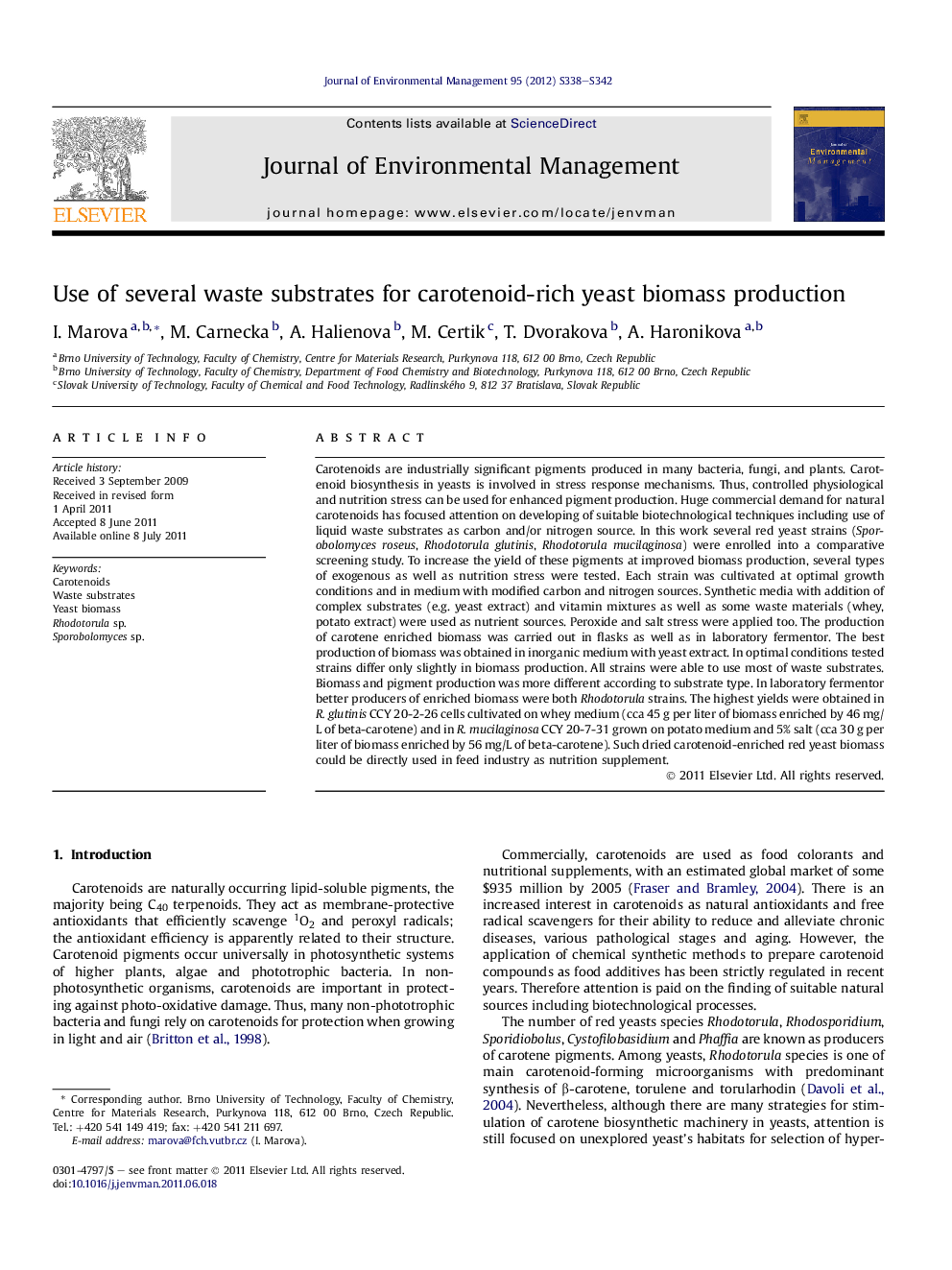| Article ID | Journal | Published Year | Pages | File Type |
|---|---|---|---|---|
| 1057076 | Journal of Environmental Management | 2012 | 5 Pages |
Carotenoids are industrially significant pigments produced in many bacteria, fungi, and plants. Carotenoid biosynthesis in yeasts is involved in stress response mechanisms. Thus, controlled physiological and nutrition stress can be used for enhanced pigment production. Huge commercial demand for natural carotenoids has focused attention on developing of suitable biotechnological techniques including use of liquid waste substrates as carbon and/or nitrogen source. In this work several red yeast strains (Sporobolomyces roseus, Rhodotorula glutinis, Rhodotorula mucilaginosa) were enrolled into a comparative screening study. To increase the yield of these pigments at improved biomass production, several types of exogenous as well as nutrition stress were tested. Each strain was cultivated at optimal growth conditions and in medium with modified carbon and nitrogen sources. Synthetic media with addition of complex substrates (e.g. yeast extract) and vitamin mixtures as well as some waste materials (whey, potato extract) were used as nutrient sources. Peroxide and salt stress were applied too. The production of carotene enriched biomass was carried out in flasks as well as in laboratory fermentor. The best production of biomass was obtained in inorganic medium with yeast extract. In optimal conditions tested strains differ only slightly in biomass production. All strains were able to use most of waste substrates. Biomass and pigment production was more different according to substrate type. In laboratory fermentor better producers of enriched biomass were both Rhodotorula strains. The highest yields were obtained in R. glutinis CCY 20-2-26 cells cultivated on whey medium (cca 45 g per liter of biomass enriched by 46 mg/L of beta-carotene) and in R. mucilaginosa CCY 20-7-31 grown on potato medium and 5% salt (cca 30 g per liter of biomass enriched by 56 mg/L of beta-carotene). Such dried carotenoid-enriched red yeast biomass could be directly used in feed industry as nutrition supplement.
► In this study production properties of several carotenogenic yeasts were compared. ► To increase the yield of biomass and pigments salt and peroxide stress were applied. ► Some waste materials (whey, potato) were used as nutrients in flasks and fermentor. ► The highest yields were obtained in Rhodotorula glutinis CCY 20-2-26 grown on whey medium. ► Waste substrates and mild stress could be used for carotenoid-rich biomass production.
